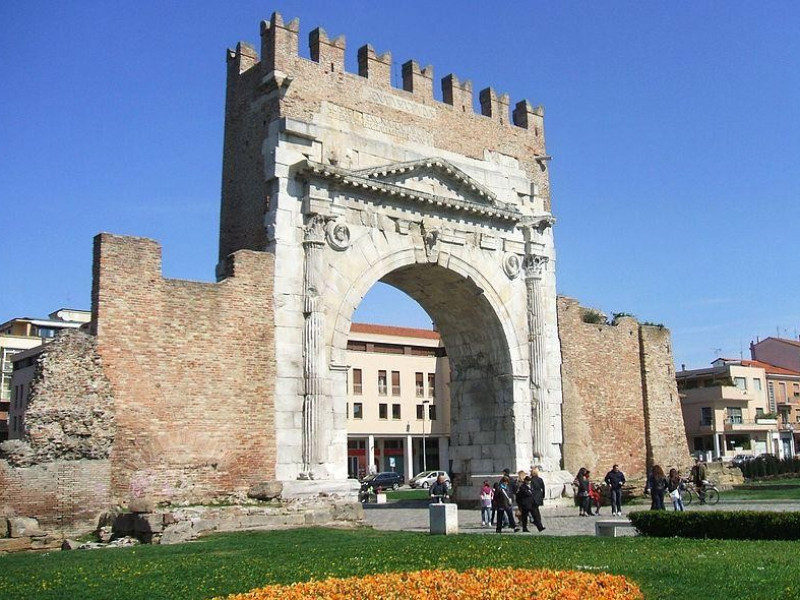Arco d'Augusto
The Augustus's Arch was dedicated to Emperor Augustus by the Roman Senate in 27 BC. It is the oldest surviving Roman arch. It marked the end of the Via Flaminia, which connected the city of Rimini to the capital of the empire. The style that composes it is solemn: the central arch is flanked by two half with stems grooved and Corinthian capitals, with many Roman gods (Jupiter, Apollo, Neptune and the goddess Roma). Its main function, as well as a city gate, was to support the great bronze statue of Emperor Augustus in the act of leading a chariot. The battlements at the top dates back to the Middle Ages, a time when Rimini was held by the Ghibellines. The town's door until the Fascist period, when the walls were demolished and the arch was an isolated triumphant monumen. Along with the bridge of Tiberius, it is today one of the symbols of Rimini, as to appear in the arms of the city. The muzzle of a bull on the opening represents the strength and power of Rome.



